- BY kq
- POSTED IN Granite
- WITH 0 COMMENTS
- PERMALINK
- STANDARD POST TYPE
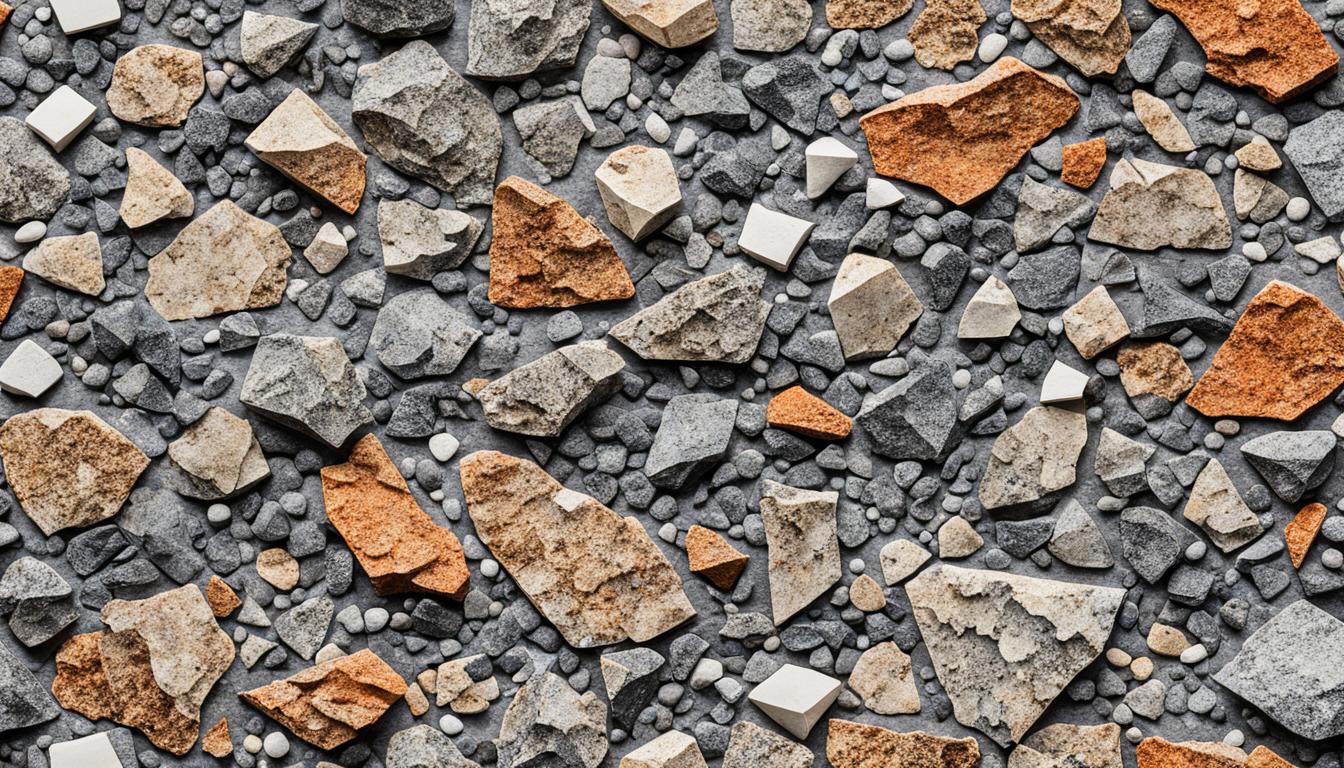
Welcome to our exploration of granite, a fascinating natural material that has captivated humans for centuries. In this article, we will dive deep into the origins of granite and shed light on whether it is considered a stone. We will uncover its composition, characteristics, and the different types of granite rocks found in nature. Furthermore, we will explore the properties and durability of granite, comparing it to other stones commonly used in various applications. Additionally, we will unveil the geological formation process of granite and its immense importance in the field of geology. Lastly, we will touch upon the versatile uses of granite in different industries, showcasing its practicality and aesthetic appeal.
So, join us on this journey as we unravel the mysteries and uncover the wonders of granite, a truly remarkable stone.
Key Takeaways:
- Granite is a natural material with unique origins, composition, and characteristics.
- It is considered a stone, admired for its durability and aesthetic appeal.
- There are various types of granite rocks, each with its own distinct features and applications.
- Granite possesses properties that make it stand out from other stones in terms of hardness, heat resistance, and longevity.
- The formation process of granite involves intricate geological processes and plays a crucial role in the Earth’s crust.
Understanding Granite’s Composition and Characteristics
Granite is a remarkable stone renowned for its durability and aesthetic appeal. In this section, we will delve into the composition and unique characteristics that make granite distinct.
The Composition of Granite: Is granite a stone?
Granite is primarily composed of three essential minerals: quartz, feldspar, and mica. These minerals combine to form a dazzling array of colors and patterns that give granite its natural beauty. The exact composition of granite may vary, but it typically consists of 20-60% quartz, 10-65% feldspar, and small amounts of mica, amphiboles, and other minerals.
Granite’s composition gives it the strength and resilience that makes it ideal for a wide range of applications.
The Characteristics of Granite
- Durability: Granite is renowned for its exceptional durability, making it resistant to scratches, heat, and harsh weather conditions. This durability ensures that granite surfaces remain intact and retain their beauty for years to come.
- Aesthetic Appeal: With its diverse range of colors and patterns, granite offers a unique aesthetic appeal. From classic whites and grays to vibrant hues and mesmerizing veining, granite adds a touch of elegance and sophistication to any space.
- Natural Variation: Each granite slab has its own distinct pattern and texture, making it a one-of-a-kind masterpiece. This natural variation adds an element of exclusivity and personalization to every granite application.
- Stain Resistance: Granite is naturally resistant to stains, making it an excellent choice for kitchen countertops and other surfaces prone to spills and stains. This characteristic ensures that granite surfaces can maintain their pristine appearance with minimal maintenance.
- Low Maintenance: Granite requires minimal maintenance to retain its beauty. Regular cleaning with mild soap and water is usually sufficient to keep granite surfaces looking their best.
To truly appreciate the composition and characteristics of granite, it’s essential to see it in action. Take a closer look at the mesmerizing beauty of granite in the image below:
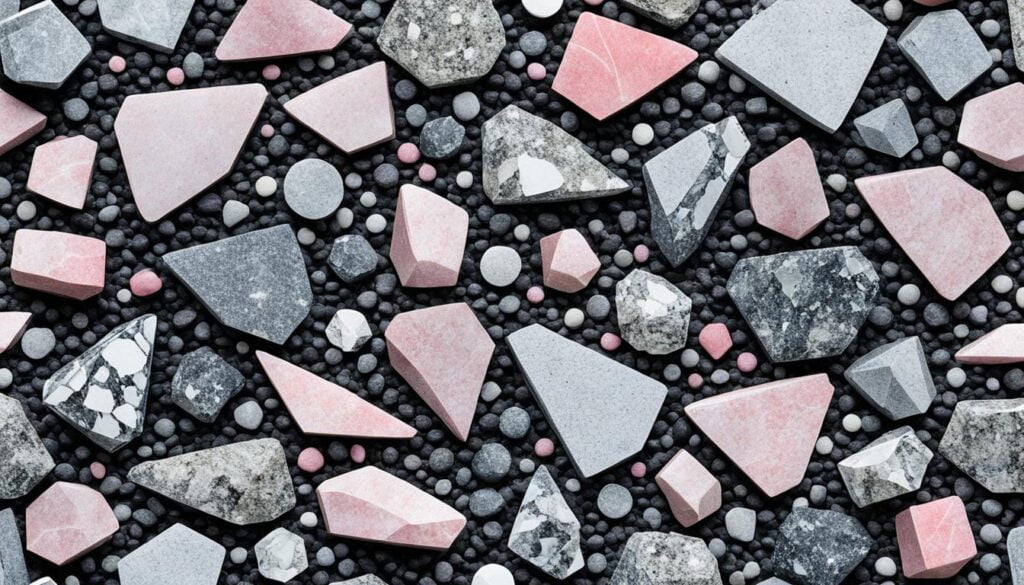
Exploring Different Types of Granite Rocks
When it comes to granite, nature has gifted us with a remarkable variety of rocks to choose from. From the timeless beauty of white and gray granites to the captivating hues and patterns of more exotic options, the diversity found in different types of granite rocks is truly awe-inspiring.
Each type of granite rock possesses its own unique characteristics and charm, making it a perfect fit for specific applications. Let’s take a closer look at some of the most popular types of granite rocks and their distinctive features.
A. Bianco Romano Granite
The elegant and versatile Bianco Romano Granite is characterized by its creamy white background adorned with intricate speckles and veining in various shades of gray. It adds a touch of sophistication to any space and is particularly favored for kitchen countertops and backsplashes.
B. Kashmir White Granite
Kashmir White Granite is an alluring stone known for its ivory-white background and subtle speckles of gray and burgundy. Its timeless beauty makes it a popular choice for flooring, bathroom vanities, and fireplace surrounds.
C. Black Galaxy Granite
With its mesmerizing appearance resembling a starlit night sky, Black Galaxy Granite exudes opulence and grandeur. Its pitch-black background is adorned with golden speckles, creating a stunning visual contrast. This type of granite is often used for statement-making kitchen islands, bar tops, and accent walls.
D. Blue Pearl Granite
Blue Pearl Granite, as the name suggests, boasts a breathtaking blue hue interlaced with shimmering silver and gray specks. Its distinctive color and reflective properties make it a popular choice for kitchen countertops, bathroom vanities, and outdoor applications.
“The beauty of granite lies in its countless variations, enabling us to find the perfect stone to suit our aesthetic preferences and functional needs.” – Granite Enthusiast
These examples represent just a fraction of the mesmerizing array of granite rocks found in nature. Whether you prefer the timeless elegance of white granite, the boldness of black granite, or the allure of colorful varieties, there’s a type of granite rock available to bring your design vision to life.
| Type of Granite | Characteristic Features | Popular Applications |
|---|---|---|
| Bianco Romano Granite | Creamy white with gray speckles and veining | Kitchen countertops, backsplashes |
| Kashmir White Granite | Ivory-white with gray and burgundy speckles | Flooring, bathroom vanities, fireplace surrounds |
| Black Galaxy Granite | Pitch-black with golden speckles | Kitchen islands, bar tops, accent walls |
| Blue Pearl Granite | Blue with silver and gray specks | Kitchen countertops, bathroom vanities, outdoor applications |
Table: Overview of popular types of granite rocks and their characteristic features.
With such an exquisite range of types of granite rocks available, you can truly unleash your creativity and create stunning spaces that reflect your unique style and preferences.
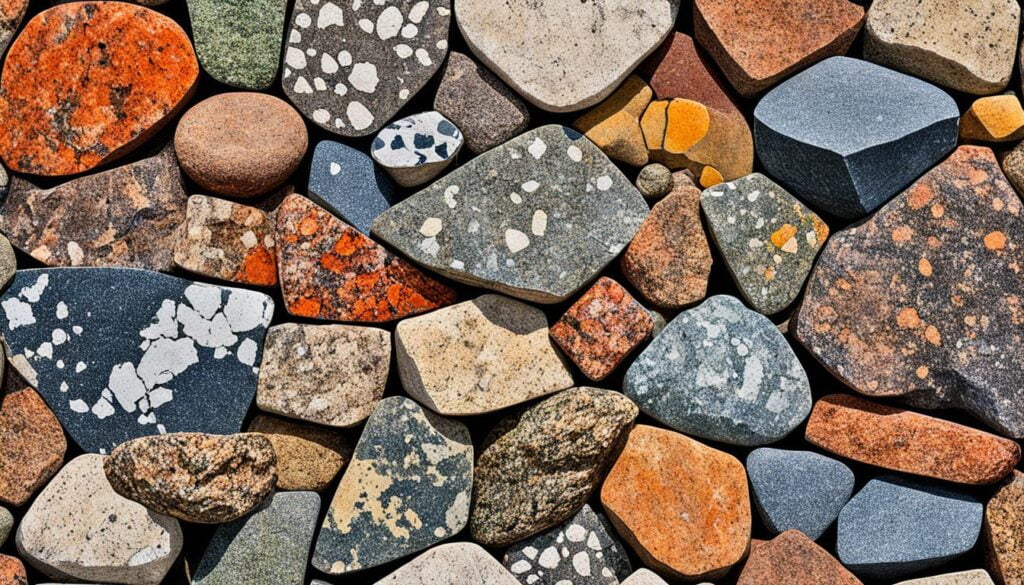
Unveiling Granite’s Properties and Durability : Is granite a stone?
Granite is renowned for its exceptional properties and durability, making it a popular choice for various applications. Let’s explore the unique characteristics of granite and compare it to other stones in terms of performance and resilience.
One of the key properties of granite is its remarkable hardness. Ranking high on the Mohs scale, granite is one of the hardest natural stones, surpassing the durability of most other materials. This hardness ensures that granite countertops, flooring, and other surfaces remain resistant to scratches and dents, maintaining their pristine appearance for years to come.
In addition to hardness, granite exhibits impressive heat resistance. Thanks to its formation process deep within the Earth’s crust, granite can withstand high temperatures without warping or melting. This heat resistance makes granite an ideal choice for kitchen countertops, where hot pots and pans are frequently placed.
Is granite a stone?
Moreover, granite’s resistance to scratches and heat is complemented by its ability to withstand outdoor elements. Whether it’s the harsh rays of the sun or the heavy rains, granite’s durability allows it to endure the toughest weather conditions, making it suitable for both indoor and outdoor applications.
When compared to other stones, granite stands out for its exceptional durability and longevity. Its combination of hardness, heat resistance, and weatherproof properties make it a top choice for high-traffic areas and areas exposed to constant use and abuse.
To illustrate the comparative advantages of granite over other stones, we have prepared the following table:
| Properties | Granite | Other Stones |
|---|---|---|
| Hardness | High | Varies |
| Heat Resistance | Excellent | Varies |
| Scratch Resistance | High | Varies |
| Outdoor Durability | Excellent | Varies |
As shown in the table, granite consistently excels in terms of its properties and durability when compared to other stones. The unique combination of hardness, heat resistance, scratch resistance, and outdoor durability position granite as a superior choice for a wide range of applications.
With its exceptional properties and enduring nature, granite continues to be a preferred material in construction, interior design, and landscaping projects. Its ability to withstand the test of time ensures that granite remains a timeless and aesthetically pleasing option for homeowners, architects, and designers alike.
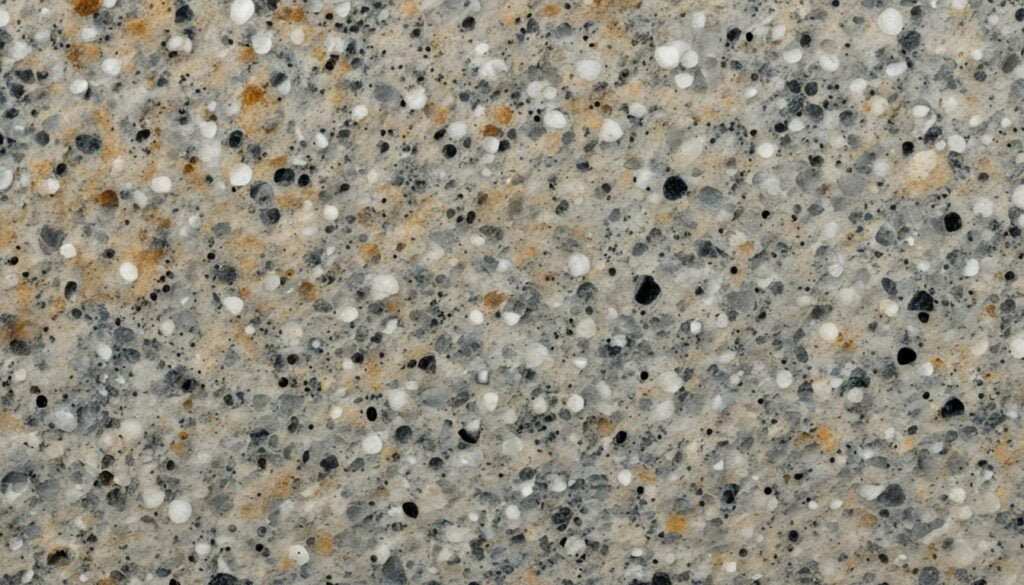
The Formation Process of Granite
Granite, a remarkable stone renowned for its beauty and durability, undergoes a fascinating formation process that unveils its unique characteristics and qualities. Originating deep within the Earth’s crust, granite is formed through a series of geological processes that span millions of years.
During the formation process, molten magma, composed of various elements and minerals, rises to the surface. This molten magma is rich in silica, which is essential for the formation of granite. As the magma cools, it solidifies and crystallizes, resulting in the formation of granite deposits.
The gradual cooling and solidification of the magma play a vital role in the formation of granite. This process occurs over an extended period, allowing the minerals and crystals to grow and develop within the granite rock. The slow cooling process contributes to the unique texture and pattern that granite is known for.
Is granite a stone?
As the granite forms, it undergoes immense pressure and heat from the surrounding rocks. This pressure helps to compact and strengthen the granite, resulting in its exceptional durability. The heat leads to the recrystallization of minerals, further enhancing the beauty of the granite.
The formation process of granite is a natural marvel that occurs deep within the Earth’s crust. It is a testament to the intricate geological processes that shape our planet and produce such magnificent stones. Understanding the formation process provides insights into the qualities and characteristics that make granite a sought-after material in various industries.
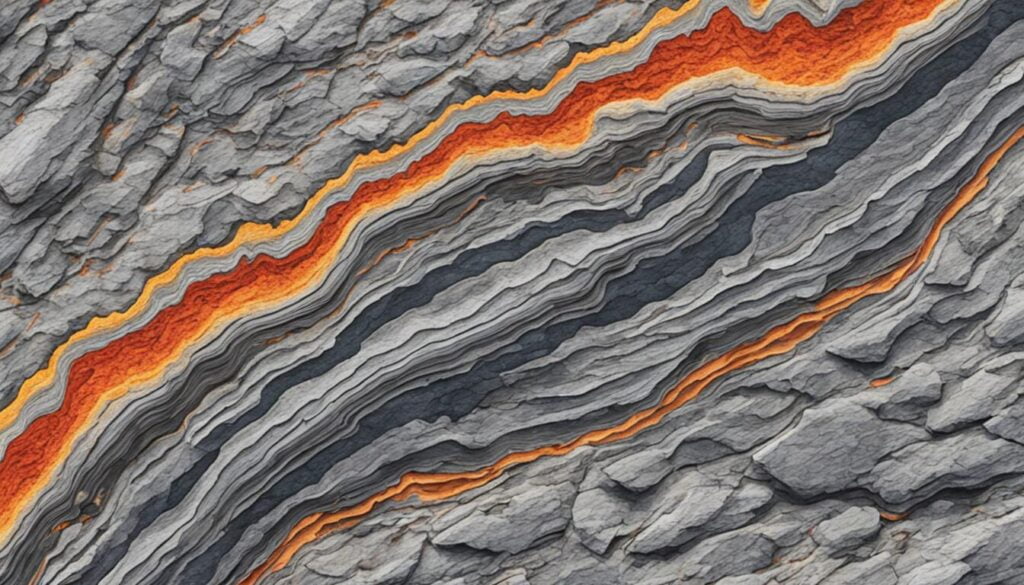
Whether it is the distinctive pattern, the durability, or the versatility, granite’s formation process contributes to its allure and makes it a popular choice for applications ranging from countertops and flooring to construction and monuments.
| Advantages of Granite | Disadvantages of Granite |
|---|---|
| 1. Durable and long-lasting | 1. Requires regular sealing |
| 2. Heat and scratch resistant | 2. Requires professional installation |
| 3. Resistant to stains and bacteria | 3. May be more expensive than other stones |
| 4. Wide range of colors and patterns | 4. Heavy and may require additional support |
As we delve deeper into the world of granite, we will explore its diverse range of types, its applications in various industries, and its significance in the field of geology. Stay tuned to discover the captivating wonders of this remarkable stone.
Utilizing Granite’s Versatility in Various Industries
Granite, renowned for its durability and timeless beauty, finds a wide range of uses in various industries. Its versatility and practicality have made it a popular choice for both functional and aesthetic applications.
Countertops and Flooring
One of the most common uses of granite is in the creation of stunning countertops and flooring. With its natural patterns and colors, granite brings elegance and sophistication to kitchens, bathrooms, and other spaces. Its heat and scratch resistance make it ideal for high-traffic areas.
Construction and Monument-Making
Granite’s strength and durability make it an excellent choice for construction projects. It is often used for building facades, bridges, and even monuments. The ability of granite to withstand the test of time makes it a preferred material for structures that require longevity.
Interior Design
Interior designers love incorporating granite into their projects for its aesthetic appeal. From accent walls to fireplace surrounds, granite adds a touch of luxury and sophistication to any space. Its natural variations create a unique visual impact that enhances the overall design.
Landscaping
In outdoor settings, granite is widely used in landscaping. It is commonly employed for pathways, stepping stones, and decorative elements like fountains or garden sculptures. The durability of granite ensures that these features remain intact even in harsh weather conditions.
Granite is not only versatile but also sustainable. Its longevity reduces the need for replacement, making it an environmentally friendly choice.
Other Applications
Granite’s versatility extends beyond countertops, flooring, construction, interior design, and landscaping. It is also used for crafting beautiful tabletops, bar countertops, backsplashes, and even bathroom vanities. The possibilities are endless when it comes to incorporating granite into different projects.
To summarize, granite’s range of uses is truly impressive. Its practicality, aesthetic appeal, and longevity make it a preferred choice in various industries. From residential to commercial applications, granite continues to showcase its versatility and enhance the beauty of any space.
| Industry | Applications |
|---|---|
| Construction | Building facades, bridges |
| Monument-Making | Monuments, memorials |
| Interior Design | Accent walls, fireplace surrounds |
| Landscaping | Pathways, stepping stones, fountains |
| Residential | Countertops, flooring, bathroom vanities |
| Commercial | Tabletops, bar countertops, backsplashes |
Unearthing Granite’s Importance in Geology : Is granite a stone
Granite, a fascinating stone with a rich history, holds immense importance in the field of geology. Its presence and characteristics contribute to various geological processes, shaping the Earth’s surface in remarkable ways.
Within the Earth’s crust, granite plays a significant role. It is one of the most abundant rocks in the continental crust, forming a substantial part of the Earth’s foundation. Its composition and structure create a solid and stable base for the surrounding geological formations.
The relationship between granite and tectonic plate movements is particularly noteworthy. As plates collide or separate, immense pressure and heat cause the melting and crystallization of rocks, including granite. This process leads to the formation of mountain ranges, such as the majestic Himalayas, where granite is a prominent component.
“Granite provides valuable insights into the Earth’s geological evolution and the forces that shape our planet.” – Dr. Geeta Sharma, Geologist
Furthermore, granite’s presence in the Earth’s crust has far-reaching implications for the formation of geological structures. Through a combination of cooling, uplift, and erosion, granite can form impressive intrusions such as batholiths, dikes, and stock formations. These features offer a glimpse into the dynamic processes that have shaped the Earth’s landscapes over millions of years.
The Geological Significance of Granite in Mountain Building
In mountain-building processes, granite plays a crucial role. Plutons, large bodies of granite, slowly crystallize deep beneath the Earth’s surface. Over time, as tectonic forces uplift these plutons, they become exposed through erosion, revealing the intricate patterns and textures that make granite so visually striking.
Granite’s durability and resistance to weathering contribute to the formation of rugged mountain ranges. The exposed granite cores, or batholiths, are often the most resistant part of the mountain, withstanding the erosive forces of wind, water, and ice. These enduring granite structures shape the majestic peaks and breathtaking landscapes we admire today.
Not only does granite contribute to the formation of mountains, but it also provides valuable geological information. Geologists can study the composition, age, and structure of granite to gain insights into the Earth’s geological evolution. By analyzing the minerals present in granite, scientists can determine the conditions under which it formed and unravel the complex history of our planet.
Appreciating Granite’s Geological Significance : Is granite a stone?
Understanding the geological importance of granite enables us to appreciate its beauty and significance on a deeper level. The intricate processes that have shaped this stone offer a glimpse into the Earth’s geological history and the forces that continue to shape our planet.
As we marvel at the breathtaking granite mountain ranges or admire the elegant patterns in countertop slabs, let us remember that these stones hold stories millions of years in the making. Granite serves as a connection between the Earth’s past and present, reminding us of the awe-inspiring power of geology.
| Granite’s Geological Significance | Key Points |
|---|---|
| Role in the Earth’s crust | – Abundant rock in the continental crust – Provides a solid and stable base for geological formations |
| Relationship with tectonic plate movements | – Pressure and heat lead to the formation of granite – Contributes to mountain-building processes |
| Implications for geological structures | – Forms intrusions like batholiths, dikes, and stock formations – Offers insights into Earth’s dynamic landscapes |
| Granite in mountain building | – Plutons slowly crystallize and uplift – Exposed granite cores shape rugged mountain ranges |
| Geological information provided by granite | – Composition, age, and structure reveal Earth’s history – Mineral analysis offers insights into geological evolution |
Comparing Granite to Other Stones : Is granite a stone?
When it comes to choosing the perfect stone for your project, it’s essential to consider the various options available. Granite, known for its durability and timeless beauty, often stands out as a popular choice. However, it’s crucial to understand how granite compares to other commonly used stones in terms of aesthetics, durability, maintenance requirements, and cost. This comparison will help you make an informed decision that aligns with your specific needs and preferences.
Aesthetics
Granite boasts a stunning array of colors, patterns, and textures, making it an excellent choice for adding visual appeal to any space. Its uniqueness lies in the natural variations that can be seen in its veining and crystalline patterns. On the other hand, other stones like marble offer a more luxurious and elegant appearance. Each stone has its own distinct aesthetics, allowing you to choose the one that best suits your design preferences.
Durability
When it comes to durability, granite is a top contender. It is highly resistant to heat, scratches, and stains, making it an ideal choice for high-traffic areas such as kitchen countertops. Other stones like limestone and travertine may not offer the same level of durability as granite, requiring more frequent maintenance and sealing to protect against damage.
Maintenance Requirements
Granite is relatively low-maintenance, requiring simple cleaning with mild soap and water to maintain its beauty. It is naturally resistant to bacterial growth, making it a hygienic choice for kitchen and bathroom applications. On the other hand, stones like marble and soapstone may require more specialized care to avoid staining and etching, such as regular sealing and the use of pH-neutral cleaning products.
Cost
When considering the cost, granite falls within a moderate to high price range, depending on the specific type and quality. While it may be more expensive than some other stones like limestone or sandstone, it is often more affordable compared to luxurious options such as marble. The cost of installation should also be considered, as granite is relatively easy to work with compared to harder stones like quartzite.
By carefully considering these factors, you can determine if granite is the right choice for your project or if another stone better suits your needs. Whether you prioritize aesthetics, durability, maintenance, or cost, understanding the nuances of each stone will guide you in making an informed decision.
| Considerations | Granite | Marble | Limestone |
|---|---|---|---|
| Aesthetics | Wide range of colors, patterns, and textures | Elegant and luxurious appearance | Soft, muted tones with natural variations |
| Durability | Highly resistant to heat, scratches, and stains | Prone to scratching and staining | Less durable and more prone to scratching and chipping |
| Maintenance Requirements | Simple cleaning with mild soap and water | Requires regular sealing and specialized care | Requires regular sealing and specialized care |
| Cost | Moderate to high | High | Moderate |
As you can see from the table above, granite offers a combination of aesthetics, durability, ease of maintenance, and cost that makes it a versatile choice for various applications. However, it’s important to weigh these factors based on your specific requirements and preferences to make the most suitable choice.
Conclusion of is granite a stone?
In conclusion, granite is a natural stone that possesses remarkable origins in the Earth’s crust. With its unique composition and characteristics, granite showcases its exceptional beauty, durability, and versatility. The formation process of granite, which involves gradual cooling and solidification, contributes to its distinct qualities.
Various types of granite rocks offer a wide range of colors, patterns, and textures, making it suitable for numerous applications in different industries. From countertops and flooring to construction and monument-making, granite has proven its practicality and aesthetic appeal.
In addition to its practical uses, granite plays a significant role in geology. Its presence in the Earth’s crust and its relationship with tectonic plate movements contribute to the formation of mountains and other geological structures.
Ultimately, the enduring appeal of granite makes it a timeless choice for a vast array of projects. Its natural origins and exceptional properties continue to make granite a preferred stone in various industries and an enduring symbol of strength and beauty.
FAQ: Is granite a stone?
Is granite considered a stone?
Yes, granite is a type of natural stone. It is formed from the crystallization of minerals deep within the Earth’s crust over millions of years.
What is the composition of granite?
Granite is composed mainly of quartz, feldspar, and mica minerals. It also contains small amounts of other minerals such as amphiboles and biotite.
What are the characteristics of granite?
Granite is known for its hardness, durability, and resistance to heat, scratches, and stains. It has a granular texture and comes in a wide range of colors and patterns.
What are the different types of granite rocks?
There are various types of granite rocks, including white granite, gray granite, black granite, blue granite, and exotic varieties with unique colors and patterns.
How does granite compare to other stones?
Granite is more durable and heat-resistant than most other stones such as marble or limestone. It also requires less maintenance and has a longer lifespan.
How is granite formed?
Granite is formed through the slow cooling and solidification of molten magma deep within the Earth’s crust. This process takes millions of years and occurs in underground chambers.
What are the common uses of granite?
Granite is commonly used for countertops, flooring, tile, monuments, and building facades. It is also used in interior design for features such as fireplace surrounds and backsplashes.
What is the importance of granite in geology?
Granite plays a significant role in geology as it is a prominent component of the Earth’s crust. It is associated with tectonic plate movements and the formation of mountains and geological structures.
How does granite compare to other stones in terms of cost?
Granite can vary in cost depending on factors such as rarity, color, and quality. It is generally more affordable than high-end stones like marble or quartzite but can be more expensive than other options like laminate or ceramic tiles.


Recent Comments